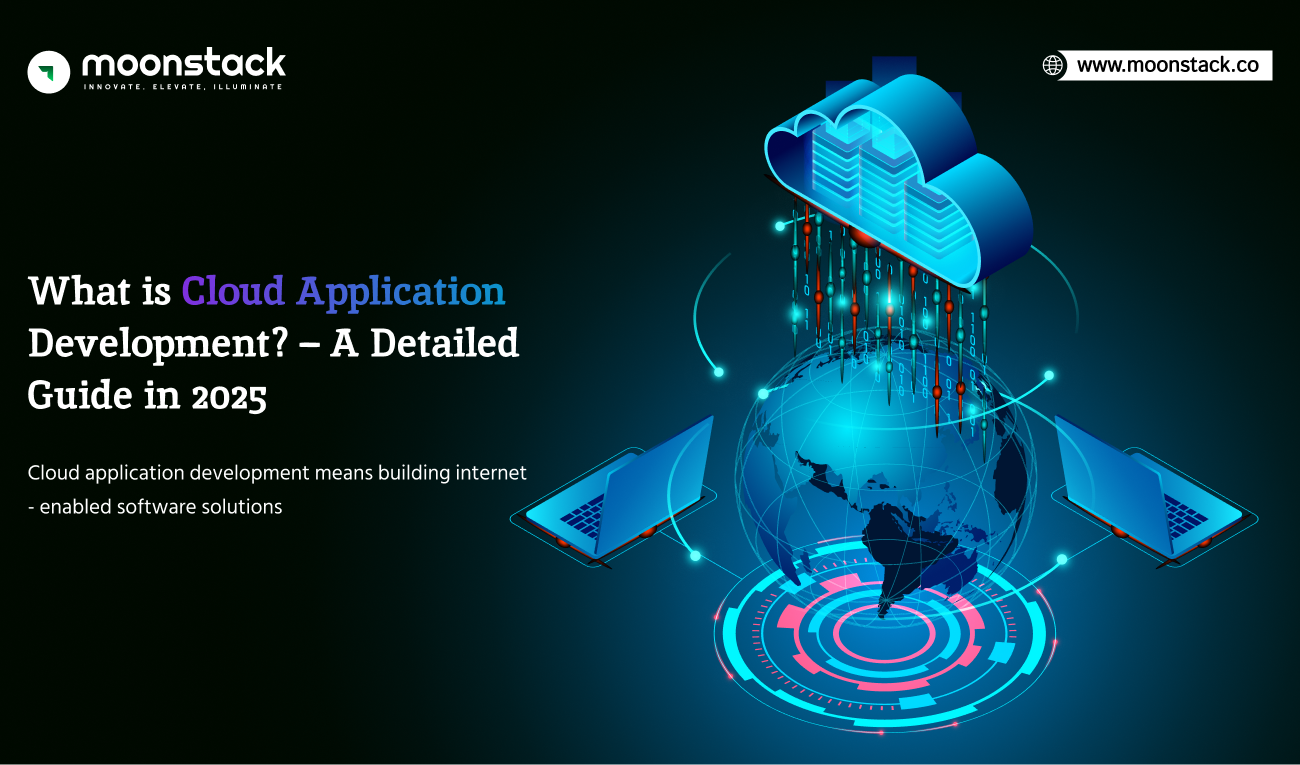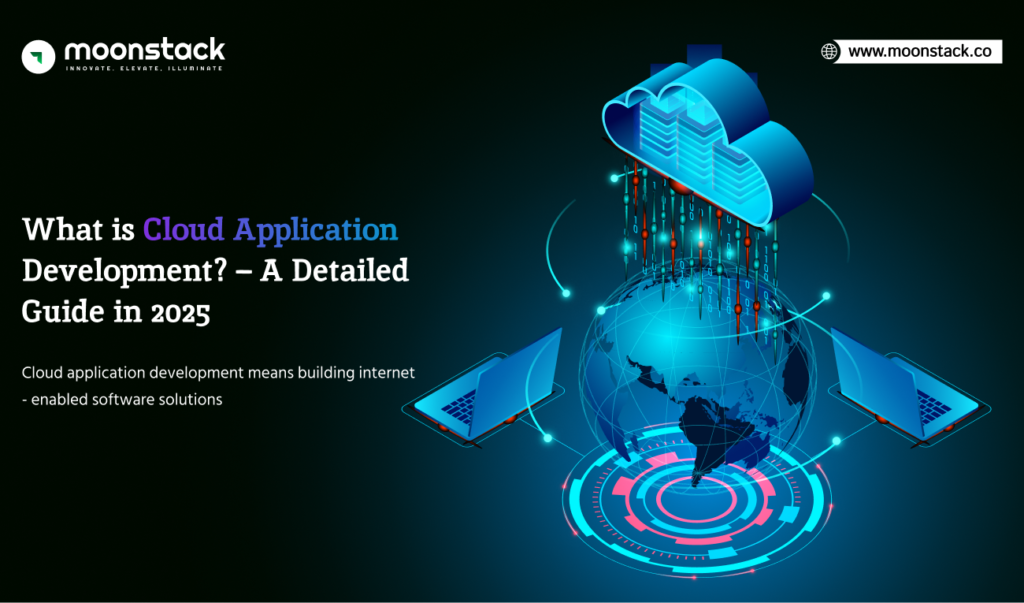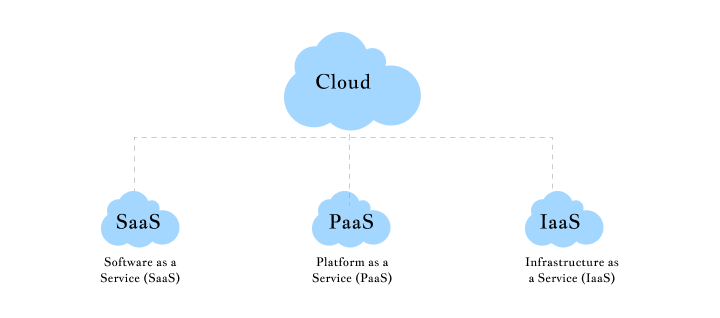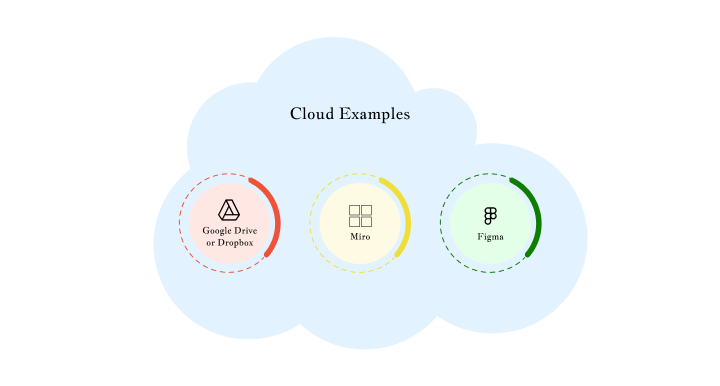Understanding Backend Development Services: A Beginner’s Guide to App Development


Definition of a cloud-based application
Cloud-based applications are internet-based apps that may be accessed using cloud-based services. Enterprises utilize cloud apps to store their entire database, which end users may access using credentials from any device, browser, and location at any time.
These cloud services are cost-effective, time-saving, and conveniently accessible to end users. However, the cloud program is based on remote servers and runs quite smoothly. As a result, integrate cloud apps for flexibility and convenience of use in the commercial setting.
What is cloud application development?
Cloud application development entails creating internet-enabled software solutions that consumers may access from any browser and device. These programs do not rely on personal PCs or local servers for accessibility.
Types of Cloud-Based App Solutions

There are three major cloud-based software solutions to build for enterprises; which are:
Software as a Service (SaaS)
Software as a Service (SaaS) is cloud software developed through mobile apps and web browsers. These are accessible through the internet, allowing end users to access them without configurations or installation.
Use Cases of SaaS:
- Manage clientele base and work aligned with custom relationship management (CRM) systems
- Automating the tasks and operations in an organization
- Organizing the documents and managing the data-sharing process
- Planning for the upcoming events
- Automate the signing process for products & services
Examples of SaaS – AWS, Salesforce, BigCommerce, Zendesk, Google Apps
Platform as a Service. (PaaS)
Platform as a Service (PaaS) is for developers who rent resources and services to construct their apps. Cloud apps rely on cloud providers for infrastructure, development tools, and operating systems. Furthermore, cloud vendors provide hardware and software resources to make mobile app development more agile and straightforward.
PaaS Use Cases:
- Development Tools
- Operating Systems
- Database running infrastructure and middleware
Examples of PaaS: Windows Azure, OpenShift, and Heroku.
Infrastructure as a Service (IaaS).
Infrastructure as a Service (IaaS) cloud services; cloud providers manage the whole company infrastructure, including networks, servers, storage, and visualization. The cloud service provider keeps an eye on the current functions and operations.
Use Cases for IaaS
- Tracking activities and functions.
- Detailed invoice generation and disaster recovery/backup solutions.
- Security Management
- High-performance computing.
Examples of IaaS include PayPal, Zoom, Slack, and Microsoft Azure.
Types of Cloud-Based Apps Deployment

1. The public cloud
On any public cloud, the business data is stored on a third-party server that can be controlled by a certified cloud provider. The management of servers, resources, and infrastructure is the responsibility of these suppliers. Since third-party cloud providers will handle operations at the appropriate pricing for precise and seamless data processing, there is no need to buy hardware for data management. Furthermore, anyone with an internet connection can access these cloud apps.
2. Private Cloud
Only authorized users of a specific business can access the data via the internet in a private cloud, which is a personal cloud application. Strong firewalls protect these cloud apps, which the IT firm also keeps an eye on and controls.
3. Cloud Hybrid
You may use the advantages and capabilities of both public and private clouds with hybrid cloud apps. Both on-demand services and third-party apps may receive the data. Additionally, they can pick from a variety of deployment and optimization methods to make the less necessary informative data public and safeguard private data.
4. Cloud Community
Various businesses from related communities can access services and resources on the community cloud. This is neither private, which is limited to a single organization, nor public, which is open to everyone. Multiple organizations from the same community oversee and govern the neighborhood.
Cloud Application Examples

These days, cloud applications are used by the majority of corporations, enterprises, and large-scale enterprises to efficiently process databases and operations. Here are some excellent examples of cloud-based applications to show readers that it might be worthwhile:
Dropbox or Google Drive:
Everyone is aware of Google Drive. People all across the world use Dropbox or Google Drive to store files, retrieve them easily, process paperwork properly, and make it available from anywhere at any time.
Miro:
It is a digital or virtual dashboard that allows you to collaborate with other users in a more enjoyable and inventive manner. It promotes cooperation and real-time coordination with other distant teams. For improved accuracy and collaboration at work, users can SMS or make in-app video calls in the event of issues.
Figma:
Figma is an app for cloud-based design that makes it possible to process designs more precisely and effectively. By using plugins and widgets to automate the job, it makes it possible to finish design chores quickly.
How to Build Cloud Application – Step-by-Step Guide
The cloud applications development method differs greatly from that of developing web and mobile applications. While many others are also available for good developments, the majority of large-scale businesses use AWS development services for cloud app development. Finally, the entire process of developing a cloud application is acknowledged in the following step-by-step:
Learn about the Market Research and the Project
To decide what to develop, it is crucial to first learn about the project and conduct a market analysis. You need to research and comprehend which apps are appropriate for cloud development. In order to create the best cloud software, market research will help you gain a thorough understanding of the market and pinpoint the target market.
Talk about Including Specific Features and Architecture
Choose which functionalities and features to suggest. Choose the best option for seamless app performance by talking with the development firm about the cloud migration, services model, and cloud app architecture.
Select the Tech Stacks and Methods of Monetization
Acknowledge the tech stacks and business strategy after you have a firm grasp of the app’s features and capabilities. Before turning over the development, educate yourself on various technologies. Additionally, decide if you require a cloud-based application with a freemium or premium model, integrate in-app purchases, or use another unique method of monetization. To obtain ideas and knowledge for the best one, it is advisable to seek out cloud app development consulting from seasoned professionals.
Create the cloud application.
Following the selection of tech stacks and the development of features and functionalities for the cloud application, the UI/UX designs are the next step. For mobile apps to be user-friendly, their designs must be visually appealing and intuitive. Additionally, use caution when developing cloud-native apps, as it is crucial to design them based on user involvement in order to attract the attention of the intended audience more quickly.
Create the application and test it.
When the development stage comes around, it calls for precise planning, ongoing monitoring, and suitable implementation. Establish a connection with the team, assign tasks, split responsibilities, and develop cloud applications using the Scrum and Agile Methodologies. Additionally, prioritize cloud-native application development since it provides more individualized and convenient procedures.
The testing stage follows the development of the cloud application. Before the application is released into the market, the interrogating team will arrive to ensure that it performs well. The application’s performance and user experience must be flawless during the testing phase.
Deployment At The Dedicated Platforms
Proceed with the launch procedure on the specific deployment platform. For deployment, choose Android, Google Play Store, Apple App Store, or Cross Platform, with follow-ups and documentation completed.
Concluding remarks
For corporations, enterprises, and large organizations, cloud-based applications provide a very streamlined and seamless environment for managing databases and adhering to appropriate, high-level security measures during operations and functionality.
The benefits of using cloud application development services for a corporation are numerous. To succeed in the cutthroat market, you must, nevertheless, embrace the full potential of digitization as it evolves within the system.
Speak with a cloud application development company to ensure that functions are built and executed accurately in the corporate environment. The business and its experts will make wise recommendations and create flawless cloud software solutions.
Let Moonstack help you turn your ideas into reality in 2025 and beyond by developing state-of-the-art cloud applications that are customized to your company’s needs and guarantee scalability, security, and flawless performance!
Connect with Moonstack
Ready to take the first step towards unlocking opportunities, realizing goals, and embracing innovation? We're here and eager to connect.


